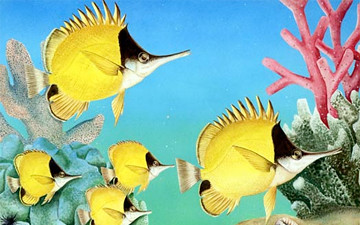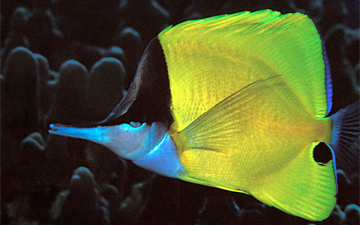Actinopterygii

Giant Oarfish
Regalecus glesne



10 POINTS
• Regalecus glesne has a MOVE of 2.
Its length and bizarre appearance are presumed to be responsible for some sea serpent sightings.

Long Nosed Butterfly Fish
Forcipiger flavissimus



10 POINTS
• Forcipiger flavissimus has a MOVE of 2. Forcipiger flavissimus has a black spot on their tail to confuse predators.

Humpback Turretfish
Tetrosomus gibbosus


10 POINTS
• Tetrosomus gibbosus has a MOVE of 2.

Leafy Sea Dragon
Phycodurus eques


10 POINTS
• Phycodurus eques has a MOVE of 2.
The leafy sea dragon is the official marine emblem of the state of South Australia.

Slender Sunfish
Ranzania laevis


10 POINTS
• Ranzania laevis has a MOVE of 2.
The Slender Sunfish, like the other species of sunfishes, lacks a true tail and instead has a broadly rounded extension called a clavus.

Atlantic Footballfish
Himantolophus groenlandicus


10 POINTS
Play: H. groenlandicus has a MOVE of 2 and can act as a PARASITE on other H. groenlandicus cards in play.
Fact: At maturity, the much smaller male becomes a parasite of the female